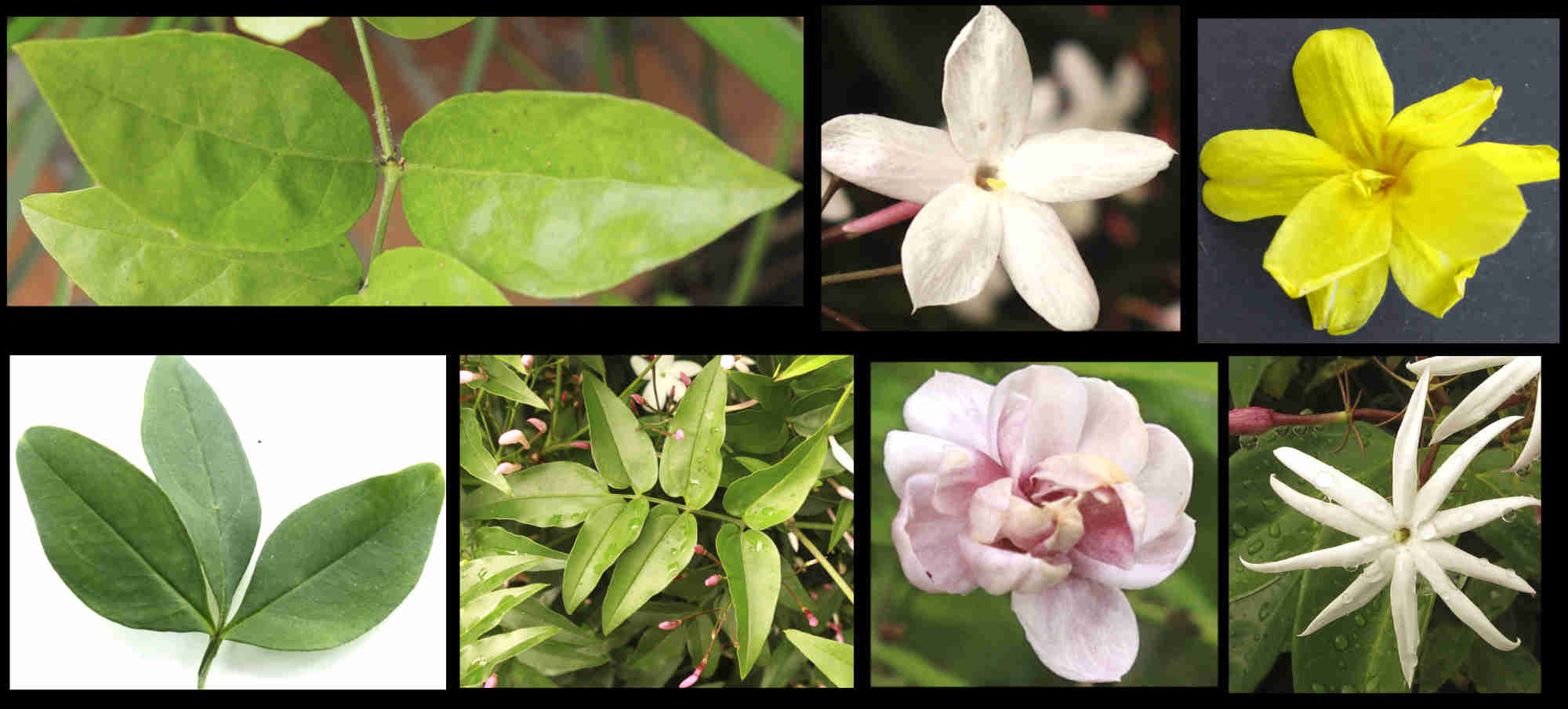Jasminum.
Plants of the World Online (Kew) accepts 201 Jasmine species in Family Oleaceae.
Australia has up to 8 species, known as Native Jasmines with 4 in S.E. Queensland. There are also a number of subspecies.
Most are evergreen shrubs with branches metres long that will climb or scramble where there are suitable supports.
The few trees are mostly under 5 m but may be twice that.
Small round or 4-angled twigs have simple hairs.
Almost all species have opposite leaves on a petiole 5 mm to 2.5 cm long.
Blades can be simple or divided into 3 leaflets or pinnate with an odd terminal leaflet.
Leaflets, 1 -10 cm long by 3 mm to 6 cm wide are on a petiolule 1 mm to 1.5 cm long.
Petioles and petiolules have simple hairs.
Leaflets can be broad or narrowly linear, elliptic, ovate or lance-shaped and have a round or pointed tip, a round or flat base or the blade may run down the petiolule.
The edge is smooth and there may be simple hairs mainly on the lower surface.
Domatia (small hair-covered pits) in the lower vein axils may host mites.
Inflorescences are branched terminal or axillary clusters of 3 to 15 (50) flowers. Solitary flowers are rare.
Flowers are on a pedicel from 3 mm to 2 cm long.
Bracts at the branch bases and bracteoles on the pedicels are common.
Occasionally leaf-like they are mostly small and linear and they may have hairs.
The bell or cup-shaped calyx has a tubular base up to 3 mm long.
The rim can be flat or have teeth or lobes from 1 mm to around 1 cm long.
The lobes are often very narrow (filiform) and there may be hairs.
The corolla tube, up to 1 cm long has 4 or 5 (several) overlapping spreading lobes 5 to 10 mm long.
There may be a second similar whorl.
Flowers, up to 3 cm across are mostly white or yellow.
The 2 stamens, on short filaments are inserted onto the corolla tube.
Basifixed anthers, opening inwards through longitudinal slits do not extend past the corolla.
The superior ovary has 2 locules each with 2 ovules (1 may abort).
On any one plant some flowers have a short style with the 2 linear stigma lobes lying in the corolla tube while in other flowers it extends past the tube.
The fruit is a didymous berry with 2 deep lobes (1 may abort).
From 5 to 10 (30) mm long the blackish-purple berries have 2 (1) seeds.
J.F.


